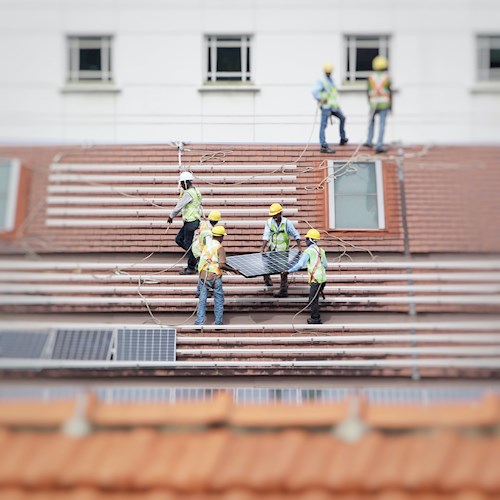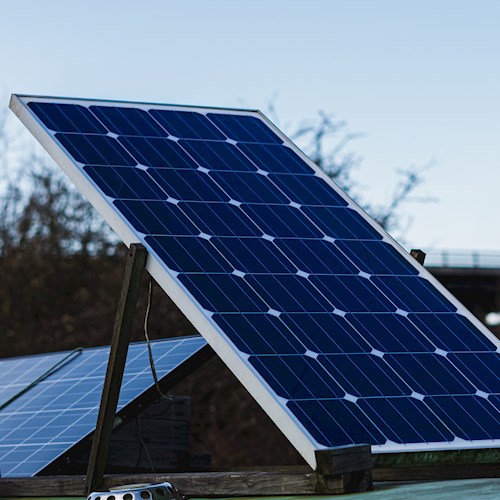

Transitioning to clean, renewable sources of electricity is a cornerstone of climate action. Our aim is to make renewable energy accessible and affordable for everyone in Dane County.


Solar power uses a renewable energy source – the sun – and provides many benefits for individuals and the community. It improves environmental quality by reducing carbon emissions and air pollution and supports local solar companies. The solar industry in Wisconsin creates local jobs, saves money on energy costs, and improves electric grid resilience during peak demand and other stresses to the system.
Solar power replaces traditional fossil fuels to power homes, buildings, and transportation systems. Because it is a renewable natural resource, solar energy has substantially lower environmental impacts than fossil fuels. On an ongoing basis, there are no greenhouse gas emissions or air pollution from solar power. There are also no ongoing fuel costs for solar because the sun is free! That is part of why solar arrays offer a cheaper way to generate electricity than coal, methane gas, or nuclear energy systems. We are enthusiastic about solar because it creates local clean energy jobs and costs less than dirtier fossil fuels.
Typically, when any entity – homeowner, business, or local government – installs a solar electric system, the facility remains connected to the electric grid, and the grid serves as a kind of battery for the solar array. For example, when a rooftop solar array generates electricity, that power first goes to the facility under that rooftop. If the solar power generated is greater than what the building needs, power is sent back to the grid, and when solar production is less than what is needed, the building receives additional power from the grid.
Each utility company has rules about how electricity is valued when sent to the grid. Typically utilities have offered some version of net metering for residential customers where the residential customer meter runs backward when power is shared with the grid. In that scenario, the power shared is valued at the same price as the power the customer gets from the grid. Every utility has a cap on the size of systems that qualify for net metering; in some cases, that is 20 kW, and in other cases, it is 200 kW. When a system is larger than the utility cap for net metering, the utility pays a lower rate for the power put back onto the grid (typically, this is closer to the wholesale rate, as opposed to the retail rate). To maximize the cost-effectiveness of your system, you should understand your utility interconnection rules and your electric needs. Your solar installer can help you navigate these options.
In some cases, customers install a battery with their solar array. This enables customers to store the excess power produced from the solar array and either use it at another time when their solar production does not cover usage or sell it back to the grid at a time when the power has a higher value. Some business customers use batteries to reduce their peak demand charges. Although uncommon, some customers install batteries rather than connecting their system to the grid.